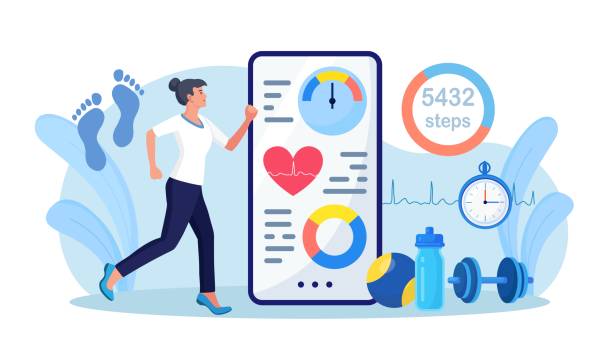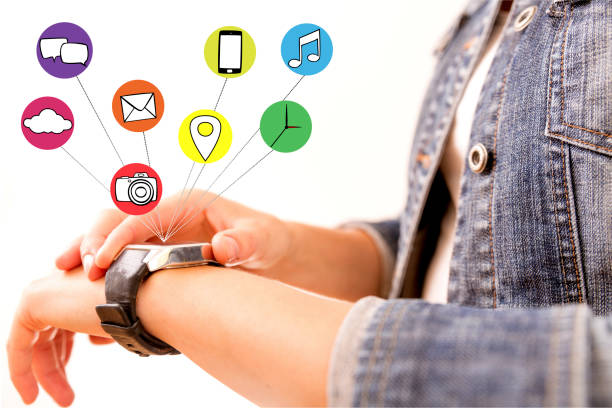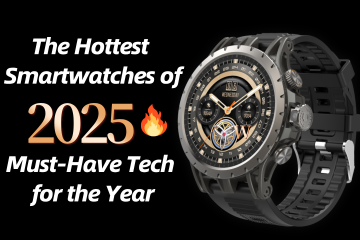Popular Blog Comparing Luxury and Advantages: A Look at the Smartwatch
The smartwatch has become a prominent fixture in modern life, heralded as a groundbreaking fusion of technology and style. As this device becomes ubiquitous, the debate surrounding its classification as either a luxury item or a necessity intensifies. This article delves into various facets of the smartwatch phenomenon, analyzing its functionalities, market positioning, user experiences, and societal implications to determine whether it is a luxury or a necessity.
Introduction to Smartwatches
Definition and Evolution
Smartwatches are wearable devices that incorporate smartphone-like functionalities. They enable users to access notifications, monitor health metrics, track fitness, and engage in mobile payments, among other capabilities. The first smartwatches emerged in the early 2000s, but it wasn’t until the release of the Apple Watch in 2015 that the market truly exploded. Today, various brands, including Samsung, Garmin, and Fitbit, produce smartwatches, each offering unique features tailored to different consumer needs.
Popularity Surge
The rise of smartwatches correlates with the growing demand for connected devices. As consumers increasingly seek convenience and seamless technology integration into their daily lives, smartwatches have positioned themselves as a practical extension of smartphones. The global smartwatch market has seen remarkable growth, with projections indicating continued expansion in the coming years.

The Case for Smartwatches as a Necessity
Health and Fitness Tracking
- Vital Sign Monitoring
One of the most compelling arguments for classifying smartwatches as necessities is their health monitoring capabilities. Many models have features such as heart rate monitors, ECG (electrocardiogram) functionality, and blood oxygen level sensors. These tools allow users to track vital signs in real-time, providing valuable insights into their health.
- Encouraging Active Lifestyles
Smartwatches often include fitness tracking features that monitor daily activity levels, encouraging users to reach their fitness goals. The integration of reminders to stand, move, or exercise can significantly influence users' habits, promoting a more active lifestyle. For those who prioritize health and fitness, a smartwatch can serve as a critical motivator.
- Chronic Disease Management
For individuals managing chronic conditions such as diabetes or hypertension, smartwatches can offer essential support. By enabling real-time monitoring of health metrics, these devices empower users to make informed decisions about their health, potentially improving quality of life and reducing healthcare costs.

Connectivity and Communication
- Streamlined Communication
In an era where communication is paramount, smartwatches provide a means of staying connected without the need to reach for a smartphone. Users can receive notifications, read messages, and even answer calls directly from their wrists. This functionality is particularly advantageous in situations where it may be inconvenient to access a phone, such as during meetings, workouts, or social gatherings.
- Hands-Free Convenience
The ability to use voice commands to interact with a smartwatch adds another layer of convenience. Users can dictate messages, set reminders, and perform various tasks without needing to engage physically with a device, making smartwatches an attractive option for multitaskers.

Navigation and Productivity
- GPS Functionality
Many smartwatches have GPS capabilities, making them invaluable for outdoor enthusiasts and travelers. Users can navigate unfamiliar areas, track runs or bike rides, and even find their way back to a starting point without relying solely on their smartphones.
- Task Management
Smartwatches can also enhance productivity by offering features such as calendar integration, to-do lists, and reminders. By keeping essential tasks and appointments accessible, users can streamline their daily routines, making it easier to manage time effectively.

Safety and Security Features
- Emergency SOS and Fall Detection
Certain smartwatches include safety features designed to protect users in emergencies. For instance, fall detection can alert emergency services if the wearer falls and remains immobile, while SOS features allow users to send distress signals quickly. These capabilities can benefit elderly users or individuals with health concerns.

The Argument for Smartwatches as a Luxury
Cost Considerations
- Price Range
While budget-friendly options are available, many smartwatches are priced at a premium. High-end models, such as those from Apple or luxury brands, can cost several hundred dollars. This significant investment leads many to perceive smartwatches as luxury items rather than necessities.
- Value for Money
For consumers who may not prioritize health tracking or connectivity features, the cost of a smartwatch may outweigh its perceived benefits. In such cases, individuals might view these devices as extravagant purchases, especially when their existing smartphones offer similar functionalities.

Fashion and Personal Expression
- Aesthetics and Customization
Smartwatches are often designed with aesthetics in mind, available in various styles, materials, and colors. This emphasis on design positions them as fashionable accessories, appealing to consumers who wish to express their style through technology.
- Status Symbol
In some circles, owning a high-end smartwatch is viewed as a status symbol. The association with luxury brands and advanced technology may lead consumers to invest in smartwatches not just for their functionalities but also for the prestige they confer.

Redundancy in Functionality
- Smartphone Alternatives
Many of the features offered by smartwatches overlap with those available on smartphones. Critics argue that the smartwatch may not be essential if a smartphone can perform a task effectively. For instance, receiving notifications or tracking fitness can often be accomplished through a smartphone app.
- Minimalist Lifestyles
As more individuals adopt minimalist lifestyles, the need for additional devices becomes questionable. For those who prioritize simplicity, a smartwatch may appear as an unnecessary gadget that complicates their lives rather than simplifying them.

The Perspective of Different User Groups
Fitness Enthusiasts
For fitness enthusiasts and athletes, a smartwatch is more than just a stylish accessory—it's a tool for tracking performance and improving results. These users prioritize features like heart rate monitoring, GPS tracking, step counting, and workout-specific metrics like calories burned, pace, and cadence.
Smartwatches tailored for athletes often offer extended battery life and precise data accuracy. Some even include specialized features like VO2 max tracking or ECG monitoring for heart health. For this group, ease of syncing with fitness apps like Strava or Garmin Connect is crucial. Customization of workout modes and performance analysis features is also highly valued, as it helps users refine their routines and track progress over time.
Tech-Savvy Users
Tech-savvy individuals, especially early adopters, view smartwatches as an extension of their connected ecosystem. They look for advanced features like voice control, app integration, and deep compatibility with smartphones, tablets, and smart home devices.
For this group, customization options are essential. They enjoy tinkering with watch faces, exploring third-party apps, and utilizing cutting-edge features like NFC payments or smart assistant integration (e.g., Siri, Alexa, or Google Assistant). For instance, a tech-savvy user may use their smartwatch not only to receive notifications but also to control music, check the weather, or even monitor smart home devices.
Health-Conscious Individuals
Health-conscious users are primarily drawn to smartwatches for their health-monitoring capabilities. This group includes individuals who may not be professional athletes but are deeply invested in maintaining a healthy lifestyle. They use smartwatches for continuous health tracking, including heart rate, sleep patterns, stress levels, and activity tracking.
Some health-conscious users may also have specific medical needs, such as monitoring blood oxygen levels (SpO2) or tracking irregular heartbeats. Features like fall detection, emergency SOS, or reminders to stand up or move are also crucial for this group. For individuals with chronic health conditions, smartwatches can serve as a non-invasive way to monitor their health metrics and stay on top of their well-being.
Fashion-Forward Users
For fashion-forward users, smartwatches are more than just functional—they are a style statement. This group is less concerned with advanced health tracking or tech features and more focused on the design, customization options, and brand appeal of the smartwatch.
These users appreciate sleek designs, interchangeable straps, and a range of watch faces that allow them to tailor their smart watches to fit different occasions, outfits, or moods. Luxury smartwatch brands like Apple, Garmin, and Samsung offer sophisticated designs that can rival traditional luxury watches, and this group is often willing to pay a premium for a stylish, well-designed piece that complements their style.

Societal Implications
Health and Wellness: Positive and Negative Impacts
One of the most significant societal implications of smartwatches is their impact on health and wellness. The health-tracking features of smartwatches, such as heart rate monitoring, sleep analysis, step counting, and even ECG (electrocardiogram) and blood oxygen measurements, have empowered individuals to take a more active role in managing their health. For many users, smartwatches act as daily reminders to exercise, stay active, and monitor key health metrics. This has raised concerns about over-reliance on technology for health decisions and the potential for false positives or missed diagnoses.
Privacy and Data Security
Smartwatches collect vast amounts of personal data, including location, health metrics, and daily activity patterns. This raises significant privacy concerns, particularly as this data is often stored in cloud servers or shared with third-party apps. For instance, a smartwatch can track your heart rate, steps, sleep, and even your stress levels, painting a detailed picture of your daily life. Users must remain vigilant and take steps to protect their data, such as using strong passwords, limiting data sharing, and being cautious about the apps they connect to their devices.
Impact on Social Interaction and Communication
Smartwatches, much like smartphones, have altered the way we communicate and interact with others. They allow users to receive notifications, read messages, and even make calls directly from their wrists. For many, this means being more connected without needing to take out a smartphone, which can be both a blessing and a curse. On the positive side, this enhanced connectivity can lead to more streamlined communication. People can respond to urgent messages or check important notifications without disrupting a meeting or social gathering. This can be especially beneficial for busy professionals who need to stay connected on the go.

Future Trends and Considerations
Advancements in Technology
As technology continues to evolve, smartwatches are likely to incorporate even more advanced features. Innovations such as improved battery life, more accurate health monitoring sensors, and enhanced connectivity options may further solidify their role in daily life.
Market Positioning
The smartwatch market is likely to diversify, catering to various consumer segments. Budget-friendly options may become more prevalent, while luxury brands will continue to target consumers seeking high-end features and aesthetics. This diversification could lead to a broader range of users finding value in smartwatches.
The Role of Personalization
Personalization will play an increasingly important role in the smartwatch market. Consumers may seek devices that not only meet their functional needs but also align with their styles and preferences. Customizable watch faces, interchangeable bands, and tailored fitness tracking features could enhance user satisfaction.

Conclusion
The classification of smartwatches as luxuries or necessities is not a straightforward dichotomy. Their value is deeply subjective and varies significantly among different user groups. For health-conscious individuals, busy professionals, and tech enthusiasts, smartwatches can serve as essential tools that enhance daily life. Conversely, for those who prioritize cost-effectiveness or prefer minimalist lifestyles, these devices may seem more like extravagant accessories.
As technology continues to advance and consumer preferences evolve, the lines between luxury and necessity may continue to blur. Ultimately, the decision to invest in a smartwatch will depend on individual needs, lifestyles, and values. As smartwatches become increasingly integrated into daily life, their significance will likely expand, shaping the way we interact with technology and ourselves.




